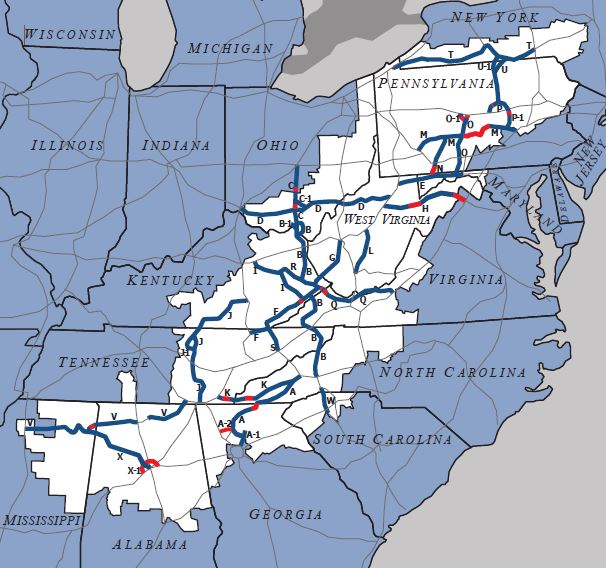For decades, the Appalachian Development Highway System (ADHS), a 3,090-mile network of highways linking Appalachia to national interstates, has generated economic development across Appalachia. ADHS’s 33 corridors provide access to regional and national markets, contributing to growth opportunities and improved access in Appalachia.
Since its inception in 1965, the ADHS generally received specifically dedicated funding for its construction from Congress on a yearly basis. However, in 2012, the Moving Ahead for Progress in the 21st Century Act (MAP-21) and its successor, the Fixing America’s Surface Transportation (FAST) Act, no longer provided dedicated ADHS funds to states’ departments of transportation. States were then allowed to build and complete ADHS corridors at their own discretion per a larger more general federal allocation.
As economic developers, ARC works directly with the Federal Highway Administration and state transportation authorities in an advisory role during this process. In 2020, for the first time in a number of years, dedicated funding of $100 million was allocated to the U.S. Department of Transportation for the purposes of constructing the ADHS. The funds were then distributed to the states based on their relative proportional share of remaining work that they have planned on the ADHS, based on the 2013 ADHS Completion Plan.

ADHS Completion Status
As of Fiscal Year 2024, 2,845.6 miles, or 92.1 percent, of the ADHS is under construction or open to traffic. By 2040, 100% of eligible miles will be complete and open to traffic or at least partially complete.

Cost-to-Complete Estimate
In cooperation with the Federal Highway Administration and state departments of transportation, ARC regularly updates the cost-to-complete estimates for the unfinished Appalachian Development Highway System (ADHS) corridors. Based on the 2021 ADHS cost-to-complete estimate, the amount of funds needed to complete all unfinished ADHS corridors is $9.7 billion.
Economic Impact
The construction of the ADHS has increased economic activity across the Region, including job creation, worker income, business sales, and saved travel time. According to a 2017 analysis, more than 168,000 jobs were created or maintained due to increased economic activity associated with the ADHS while $9 billion was added to the gross regional product. The ADHS also saves 231 million hours of travel time annually. Completion of the ADHS is estimated to create 47,000 more jobs and add $8.7 billion in goods and services annually across the 13 Appalachian states.
ADHS investments made between 1965 and 2015 generated more than $19.6 billion per year of added business sales in Appalachia, representing over $9 billion of added gross regional product
ECONOMIC ANALYSIS OF COMPLETING THE APPALACHIAN DEVELOPMENT HIGHWAY SYSTEM (2017)


